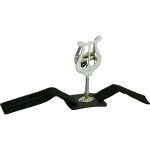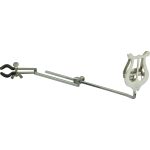Five Things All Marching Band Flutists Should Know
- Marlene
- Blog, flute, Uncategorized
- 2 Comments
Five Things All Marching Band Flutists Should Know
Just in time for marching band season, I present you with these pearls of wisdom.
I have played in and coached marching bands for many years. The flute is a delicate instrument and if not cared for properly, can be destroyed by marching band. Band directors, students, and parents would be wise to heed these common pitfalls.
Five Rules To Help Your Flute Survive Marching Band
1. Never use a dollar bill to clean the pads.
Every flutist in the country seems to have heard the urban legend that the best way to clean a sticky pad is with a dollar bill. Don’t do it. Paper money is dirty. Really dirty, like 3,000 different types of bacteria and cocaine dirty. Prevent sticky pads by swabbing the inside of the flute after every rehearsal, store the flute in its case in a dry place, and never expose the flute to extreme temperatures, like leaving it in the car.
If the keys become unbearably sticky, use a product specifically designed to clean flute pads like these papers made by Yamaha. Tear off a small sheet and gently place it under the sticky pad. Gently close and open the key. If the pad is really sticky, you may need to softly close the key and slowly drag the paper out.
2. Protect the flute from rain and snow.
This may seem obvious, but sometimes band directors forget that there are flutes and clarinets in the band. While a little rain and snow might not hurt the brass instruments, the delicate mechanism and thin pads of flutes can be destroyed by the weather. Complete re-padding of the flute is costly and rust inside the rods can be impossible to repair. In an emergency, place your flute inside the jacket of your uniform. Back inside, make sure you swab it out and allow it to completely dry before closing the case.
Guo and other manufacturers are now making plastic flutes and piccolos that are impervious to moisture. It’s my dream to have music boosters buy enough for the entire marching band flute section. They are available in a wide variety of colors too!
3. The flute is not a baton for twirling.
I’d be rich if I had a nickel for every time I saw a flutist twirling a flute at a football game. Leave the baton twirling to the majorettes. Twirling quickly becomes dropping, which can cause irreparable harm to the flute if you bend a rod or break a key. Other damage can include scratches and huge dents in the tube. The flute is an expensive piece of equipment and repairing this kinds of damage is costly.
4. Do not put the flute on a music stand.
This happens all the time with flutists. It seems like such an easy, convenient place to rest the flute, but DO NOT put your flute on a music stand. Music stands are not strong enough to hold a flute and when the upper desk drops, you flute will fall to the floor with a clang and a gasp from the rest of the band. If you are lucky enough to have a strong stand, placing your flute on the ledge is still a bad idea. Because the end of the flute hangs over the side, it is easy to bump into it and knock it off. Dropping the flute from this height will likely cause a dent or bend.
5. There are no good lyres for a marching flip folder.
I have seen three different styles of flute lyres for marching band, but all of them are miserable. The “forearm clamp” is available in several styles. This torture device involves tightly attaching a strap to the arm to hold up the music. There are two significant problems with this tool. First, you must tighten the strap like a tourniquet. If your fingers don’t turn blue from lack of circulation, sweat will make the device slide right off.
Another equally bad option is a metal clamp that attaches to the flute. This will scratch your flute and is hard to position, if you are able to get it to stay on the flute at all. (Amazon reviews of this product are pitiful.) Many years ago, I saw a third option: a lyre that would extend from the armpit forward. It was strapped around the back and cradled in the armpit However, I am not able to find that product anymore. It must have been so user un-friendly that the manufacturer gave up.
Bottom line: lyres do not work for flutes in marching band. MEMORIZE YOUR MUSIC!
If you are a marching band flutist (past or present), what knowledge would you like to pass on to the next generation?






The paddle liar worked. It didn’t strap on. You held it under your left armpit and it extended and rested on your left forearm. It was held in place by the position of your arm while playing. The downside, it as something more to hold onto. When marching (without playing) you rested your flute in your right arm, and the liar in your left. You wouldn’t be able to hold your flute in front while marching to the cadence, like many bands like to do.